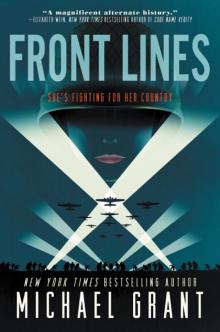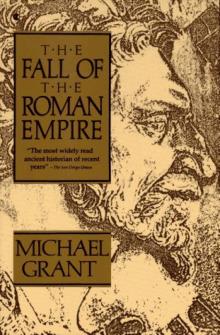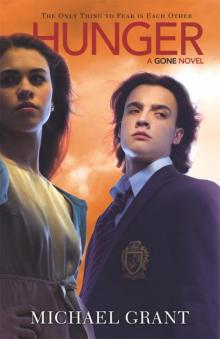- Home
- Michael Grant
Fergie Rises Page 4
Fergie Rises Read online
Page 4
If Donald was Aberdeen’s ice then Anderson, fourteen years younger, was its fire. He had played for the club just after the War and joined Donald on the board in 1967, quickly becoming a challenging, visionary influence. Anderson played a key role in the improvements that saw Pittodrie become the first all-seated, all-covered football stadium in Britain. He was a driving force in league reconstruction and predicted, many years before it became reality, that football would be shaped and financed by broadcasting rights and pay-per-view television. He also held a senior administration position at one of Britain’s leading polytechnics, Robert Gordon’s Institute of Technology in Aberdeen. There he was exposed to young, dynamic people from the expanding oil industry and he was determined to bring the same sort of energy and ambition to the city’s football club. Anderson realised that Aberdeen had to wake up. The whole north-east of Scotland was being propelled by the 1970s oil boom and there was a danger the Dons would be left behind. Flirting with relegation under Bonthrone had been a brutal shock to the system. ‘It made us think about what kind of club we should be,’ Anderson said. ‘Which in turn caused us to look very carefully–certainly more methodically than any other club at the time–at what kind of team we should have and what kind of manager should be in charge.’ From November 1975, they appointed three managers in thirty-two months: first Ally MacLeod, then Billy McNeill, then Ferguson.
MacLeod burst on to the scene as a scatty, effervescent showman; an idealist with an infectious personality. Within six months he had staved off the threat of relegation, and a year on won the League Cup. Celtic had been such overwhelming favourites that when the celebrating Aberdeen players arrived for their post-match meal at a Perth hotel they found a ‘runners-up menu’ had been left out for them. Embarrassed staff rushed to replace it with the winners’ version. MacLeod was eccentric and prone to practical jokes. He made the players train on nearby Aberdeen beach even when the tide was in and the freezing North Sea lapping at their ankles. On one pre-season trip to the fee-paying school Gordonstoun, he offered a prize to the first player to run, naked, to the nearest pub. When the squad raced off he gathered up their clothes and made away with them.
His coaching was average, but outstanding man-management carried him through, at least for a while. Good signings helped: the robust full-back Stuart Kennedy, cultured midfielder Dom Sullivan, the return of legendary goalscorer Joe Harper for a second spell, and a lanky teenaged redhead named Alex McLeish. To midfielder John McMaster, MacLeod was a breath of fresh air: ‘His training was sometimes out of this world, really good, and then other times it would feel like nothing more than five-a-sides with the same teams for ten months. Eccentric. He wasn’t good on technical stuff but he was a fun guy. He lit the place up in Aberdeen, people believed in him. But Ally had eighteen months to two years in a job and then everyone sussed him out.’ In his only full season MacLeod galvanised the North-East and added 4,000 to the average home crowd. The Scottish Football Association had seen enough and decided in May 1977 that Pittodrie’s Pied Piper was the man to take Scotland through to the World Cup in Argentina.
MacLeod had been Ferguson’s manager at Ayr and it was he who telephoned his former player to suggest he leave the newly-crowned First Division champions at Love Street and take over Aberdeen. Ferguson declined, believing he could realise his ambitions with St Mirren. That decision only delayed his arrival by a year. When Aberdeen opted instead for Billy McNeill it looked a good fit. Anderson’s headhunting had bagged the club an ambitious young manager with an excellent playing record; as early as 1974 Anderson had been quoted praising the professionalism and technical ability McNeill displayed at Celtic. McNeill was everything that MacLeod was not: meticulous, strong on preparation, outstanding on tactics, measured, and deserving of respect by dint of his achievements rather than the strength of his personality. The supporters loved him from the start. Before his first home game, against Rangers, he walked on to the pitch wearing a red shirt to thunderous approval. Like MacLeod, he served only one full season, but continued the club’s momentum, pushing them as Rangers’ closest challengers. And in Steve Archibald and Gordon Strachan he made two outstanding signings who would prove invaluable to his successor.
MacLeod, McNeill and Ferguson amounted to a hat-trick of imaginative appointments. Anderson liked to point out that some thought Aberdeen ‘daft and crazy’ for following McNeill with Ferguson, but the 36-year-old Glaswegian’s track record and energy made him the small board’s unanimous choice. Not that losing their two previous managers had caught Aberdeen unaware. ‘Old Dick got compensation for Ally going to Scotland and then for Big Billy going to Celtic,’ said Doug Rougvie, the defender who had played under both. ‘He was rubbing his hands, going “Ya beauty!” The auld yin knew the right side of a bawbee. Aberdeen were always in the black under him. Dick was amazing.’ The club secretary at the time, Ian Taggart, began working for Donald in 1976, and takes with a pinch of salt the board’s assertion that the three appointments were part of a phased progression. ‘These guys were available at the time. Our board were Aberdonians, and not as brash or forthcoming as Glaswegians. The chairman admitted later that he wouldn’t have hired Fergie if he’d still been in a job. They wouldn’t have poached him from anyone else. Fortunately for us he got the heave at St Mirren.’
Ferguson’s greatest gift in the summer of 1978 was not talent but timing: his availability and the Aberdeen vacancy aligned. Some in the North-East had reservations about him. There were those around the city who saw him as typical of the kind of outspoken Glaswegian they instinctively disliked. Many remembered the game against Falkirk five years earlier when he had been sent off. Others worried that he still had much to prove. Under McNeill, Aberdeen climbed to second in the league and reached the Scottish Cup final; they had finished twenty-three points and six places higher than Ferguson’s St Mirren. And Ferguson had just been fired somewhat messily and was taking industrial action against a club who had flirted with relegation. The Aberdeen support reacted to news of his appointment quietly. ‘Some people wondered if the bad publicity surrounding his departure would put the directors off,’ said Gordon Strachan.
Ferguson was certainly nowhere near as polished as McNeill. What did he have that appealed to Aberdeen? ‘We believed it was vital to have a manager who had refined coaching and technical abilities,’ said Anderson, years later. ‘That man, the one with all the warts about him at the time, was Alex Ferguson. And he came here very humble, which might surprise people, but only those who really don’t know him. We had rescued him from a rough time.’
Chapter 4
‘BE ARROGANT, GET AT THEIR BLOODY THROATS’
Alex Ferguson took his first Aberdeen training session on Monday morning, 17 July 1978. After only four years as a manager he could claim to be in charge of the most promising group of players in the country. The 31-man squad he inherited contained four current Scotland internationals and six more who would go on to be capped in the years to come. The raw ingredients were already there.
Leading the pack were Willie Miller and the three men newly returned from the trauma of the World Cup in Argentina: Joe Harper, Stuart Kennedy and Bobby Clark. Harper was short, squat and heavy. It was hard to look at his weight and shape and believe he could trouble seasoned defences, but throughout the 1970s he was an instinctive and brilliant penalty box finisher. He had scored twenty-seven goals for Aberdeen in the previous season. Indeed, he had been scoring prolifically since making his debut nine years earlier, and in the 1971–72 campaign he managed forty-two, earning a European Bronze Boot from Uefa as the third highest scorer across the Continent. Defenders found Harper unstoppable. Everton took him south in 1972 and then he had a spell at Hibernian before Ally MacLeod brought him home in 1976. ‘King Joey’ already boasted the highest number of goals in Aberdeen’s 75-year history.
At right-back, Kennedy was quick and hard as nails. He possessed unshakeable self-confidence. As far as he was concerned no winger would get
the better of him and he affected surprise that they even had the cheek to try. Ferguson first met him when they were both at Falkirk, where Kennedy had a part-time deal. His day job was as an engineer in the Grangemouth docks. One night he was jogging to training when Ferguson’s car pulled up alongside and he offered him a lift. Kennedy politely declined. ‘He later asked me why I hadn’t taken a lift and I told him I preferred to jog. He said, “But it’s raining.” I said, “That disnae bother me, I work in a shipyard.” I ticked every box for Alex Ferguson!’
Clark was the oldest player in the squad. At thirty-two he was only four years younger than Ferguson. His clean-cut features reflected a wholesome and committed professional. He had been Aberdeen’s goalkeeper since 1965 and had amassed more than five hundred appearances. He had played seventeen times for Scotland and, like Harper, was synonymous with the Aberdeen teams of the 1970s.
And then there was Miller, who would have gone to the World Cup too, but for Ally MacLeod choosing Manchester United’s Gordon McQueen instead. No one was likely to describe Miller as clean-cut or wholesome. He would not have seemed out of place in a line-up of the great Italian defenders of the day. His dark hair, thick moustache and swarthy complexion gave him an almost Mediterranean look. For a sweeper he was neither tall nor quick and off the field he was a quiet, aloof figure. But Miller was the unmovable pillar of the Aberdeen team. His anticipation and reading of opposition attacks were magnificent, the timing and strength of his tackling outstanding. He was the quintessential leader. When Aberdeen had been tested in Glasgow he had been utterly unmoved by the noise and hostility from the Old Firm fans. Above all, he was ferociously driven and competitive. Miller played like a winner long before he lifted his first trophy as captain, the League Cup under MacLeod nineteen months earlier.
But there was strength beyond the four internationals. Since the start of 1978 Harper had been partnered in attack by Steve Archibald, the 21-year-old Billy McNeill had signed from Clyde. Archibald was nimble, brave, quick and intelligent. His first and second Aberdeen goals had come in a 3–0 defeat of Rangers at Ibrox in January, and it was clear he would be a growing presence in the team. Behind Archibald, Dom Sullivan and John McMaster were gifted, stylish midfielders. Miller could rely on Willie Garner in central defence, though 19-year-old Alex McLeish was already showing promise in the reserves. Impish winger Gordon Strachan and mountainous defender Doug Rougvie both had plenty to offer. The reserve goalkeeper was 20-year-old Jim Leighton, and the coaches were impressed with a 16-year-old midfielder, one of the groundstaff boys, called Neil Simpson.
The task of updating Ferguson on the club’s young talent, and of shrewdly educating the incoming manager in just about every other aspect of daily life at Pittodrie, fell to Teddy Scott. The adhesive that held the team together, Scott had served every Aberdeen manager since the 1950s and was instantly Ferguson’s unquestioning lieutenant. A small man with a heavily-lined face and a wave of thick hair, he had joined the coaching staff as assistant trainer back in 1958 and took on a variety of background roles including trainer, physiotherapist, reserve and youth coach and kit manager. He played for the Dons just once, in 1954, but the contribution he made to the club over his life was immeasurable. He lived and breathed Aberdeen. If Pittodrie was open, he would be in it. If it was closed, he might still be in it: whenever he missed his last bus home to the village of Ellon, sixteen miles away, he would return to the ground and sleep on the snooker table. To those who did not know him, Scott could seem gruff, but he was quiet, wise, popular and respected.
On that first morning of training, with an assistant manager still to be appointed, it was Scott who acted as Ferguson’s second-in-command. Ferguson had hoped to take St Mirren physiotherapist-trainer to fill the role, but Ricky McFarlane was unwilling to uproot his family and move north. An approach for Walter Smith, the assistant manager at Dundee United, was also unsuccessful. At the time, Ferguson said the 30-year-old wanted to continue playing. Later he admitted that United’s powerful and headstrong manager, Jim McLean, had refused Smith permission to leave.
Scottish football is small and everyone knows one another. Ferguson had encountered Smith at SFA courses and they had been on opposing sides on the pitch and in dug-outs as players and coaches. His respect for Smith was rooted in familiarity, but his next choice was based on reputation. As a thoughtful midfielder dripping with class for Hibernian and Celtic, Pat Stanton had been one of the most admired figures in the game. Now he was thirty-three and out of work, having told the new Celtic manager, Billy McNeill, that his knee had little chance of making a full recovery from a recent operation. Stanton did not know Ferguson, so it came as a surprise when he received a telephone call asking whether he wanted to become the Dons’ assistant manager. Off the field he was unassuming to the extent that he was nicknamed ‘The Quiet Man’. But he was a shrewd appointment. ‘Pat was quiet and self-contained while Alex was vocal and passionate,’ said Willie Miller. ‘But they formed a complementary managerial team. Both were real football people.’
In fact, Stanton was the only ‘signing’ Ferguson made before the start of his first campaign. Under McNeill, the established players had come within touching distance of Aberdeen’s first league title in nearly a quarter of a century, and the transformation of the club since the threat of relegation two years earlier was apparent everywhere. The finances were stable, Pittodrie was terrific, and in eleven league and cup meetings with the Old Firm in the previous season Aberdeen had won five. But one trophy in eight years was a poor return and that worried Ferguson. There were no problems with the club’s ambition or even the quality of the team–of the thirty-one players he inherited, nine would subsequently win a European final. What nagged at Ferguson was the mental strength of the club, on and off the pitch. He wondered whether they had it in them to take the fight to Glasgow.
Ferguson had always been deeply proud of his Glaswegian roots. Govan shaped him and if he had his way it would shape everyone else, too. The Aberdeen players and coaching staff soon noticed that he instinctively warmed to any schoolboy trainees who came to the club from Glasgow or its suburbs. ‘He loved the s-forms [schoolboy signings] from Glasgow,’ said George Adams, one of the youth coaches at Aberdeen. ‘Nobody, but nobody, was as good as the s-forms from Glasgow. He’d say to the lads from Aberdeen, “Aye, you’ll nae beat the Glasgow boys. You’re no’ as hard as them, you’re no’ as worldly wise, they’re better. Gimme a boy from Glasgow and one from Aberdeen with the same ability and there’s only one I’d sign.” He was open about that. Didn’t hide it. He felt they had a hunger about them that he wanted. But he was also saying it to get a reaction. “You’ll never be as good as them…”’
Still, the opening results were encouraging. Aberdeen’s first match under Ferguson was a 5–0 friendly win at Elgin City on 31 July. Five days later there was another friendly, this one against Tottenham Hotspur at Pittodrie, the new man’s home debut. Gracing the front of the match programme were Spurs’ signings Ossie Ardiles and Ricky Villa, who had just won the World Cup with Argentina and were the talk of British football. However, difficulties with the transfer paperwork delayed their debuts and neither played, but a 19,000 crowd saw Aberdeen win 3–1 against a team who included Glenn Hoddle and Steve Perryman. The domestic season also saw a good start with a 4–1 win in the rain at Hearts on 12 August–Bobby Clark was injured so young Jim Leighton made his debut in goal–before a home win over Morton and a draw at Dundee United.
Aberdeen’s third home game under Ferguson was a mundane League Cup tie against Meadowbank Thistle on 2 September. They had won the away leg 5–0 and the only mild interest lay in whether the aggregate score would reach double figures. It didn’t, it stopped at 9–0. Just 6,580 supporters paid to get into Pittodrie that Saturday afternoon, but those who shelled out an additional 15p for the match programme were treated to something far more interesting than anything they saw on the pitch. Instead of filling his manager opinion column with the bland pl
atitudes familiar to official club publications, Ferguson seized the opportunity to make a powerful declaration of intent:
The one thing that has annoyed me all my life is this acceptance that Rangers and Celtic must win, that everything is geared around them, that nobody but nobody is expected to beat them. I look at everything round about me and success is staring me in the face. The one thing that is lying hidden inside people’s heads is this total belief. We have it in the Beach End [where Aberdeen’s noisiest supporters congregated] and that’s where we must build and develop from, right through the corridors of Pittodrie and into the dressing rooms. I keep getting a picture in my mind when I try to realise ambition and belief in players and the picture is of the Liverpool Kop. When you hear them sing ‘You’ll Never Walk Alone’ even opponents believe the Reds are going to win.

 Fear
Fear Plague
Plague BZRK: Apocalypse
BZRK: Apocalypse Bzrk
Bzrk Love Sucks and Then You Die
Love Sucks and Then You Die Silver Stars
Silver Stars The Key
The Key Front Lines
Front Lines BZRK Origins
BZRK Origins Monster
Monster Gone
Gone The Snake
The Snake The Power
The Power Hunger
Hunger Lies
Lies A Sudden Death in Cyprus
A Sudden Death in Cyprus Messenger of Fear
Messenger of Fear Eve & Adam
Eve & Adam The Trap
The Trap Light
Light An Artful Assassin in Amsterdam
An Artful Assassin in Amsterdam The Call
The Call Hero
Hero Soldier Girls in Action
Soldier Girls in Action Purple Hearts
Purple Hearts The Tattooed Heart
The Tattooed Heart The Fall of the Roman Empire
The Fall of the Roman Empire BZRK Reloaded
BZRK Reloaded Messenger of Fear Novella #1
Messenger of Fear Novella #1 The Magnificent 12
The Magnificent 12 Fear: A Gone Novel
Fear: A Gone Novel Villain
Villain Manhattan
Manhattan Eve and Adam
Eve and Adam Plague: A Gone Novel
Plague: A Gone Novel Fergie Rises
Fergie Rises In the Time of Famine
In the Time of Famine Hunger_A Gone Novel
Hunger_A Gone Novel Lies g-3
Lies g-3